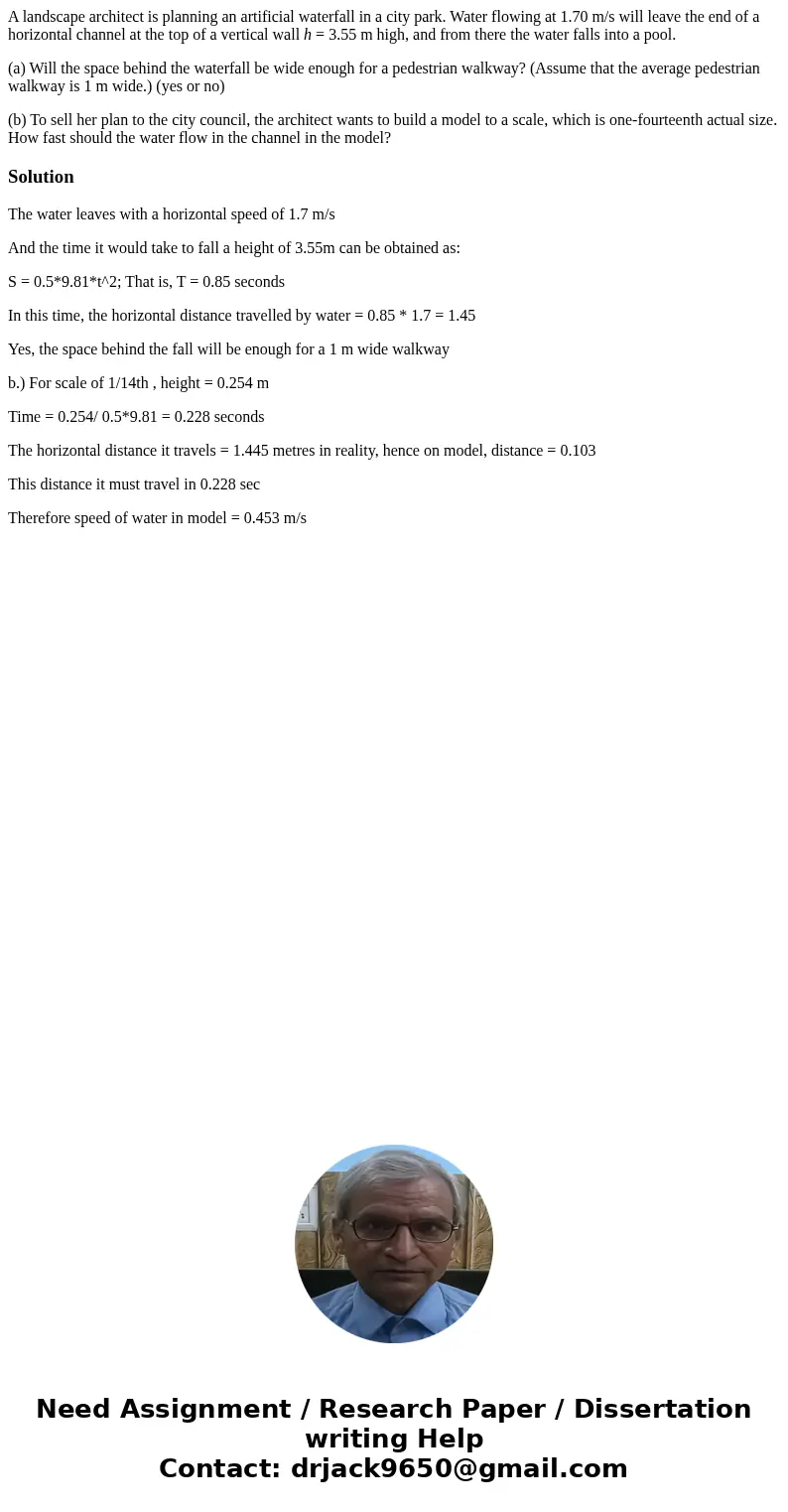A landscape architect is planning an artificial waterfall in
A landscape architect is planning an artificial waterfall in a city park. Water flowing at 1.70 m/s will leave the end of a horizontal channel at the top of a vertical wall h = 3.55 m high, and from there the water falls into a pool.
(a) Will the space behind the waterfall be wide enough for a pedestrian walkway? (Assume that the average pedestrian walkway is 1 m wide.) (yes or no)
(b) To sell her plan to the city council, the architect wants to build a model to a scale, which is one-fourteenth actual size. How fast should the water flow in the channel in the model?
Solution
The water leaves with a horizontal speed of 1.7 m/s
And the time it would take to fall a height of 3.55m can be obtained as:
S = 0.5*9.81*t^2; That is, T = 0.85 seconds
In this time, the horizontal distance travelled by water = 0.85 * 1.7 = 1.45
Yes, the space behind the fall will be enough for a 1 m wide walkway
b.) For scale of 1/14th , height = 0.254 m
Time = 0.254/ 0.5*9.81 = 0.228 seconds
The horizontal distance it travels = 1.445 metres in reality, hence on model, distance = 0.103
This distance it must travel in 0.228 sec
Therefore speed of water in model = 0.453 m/s

 Homework Sourse
Homework Sourse